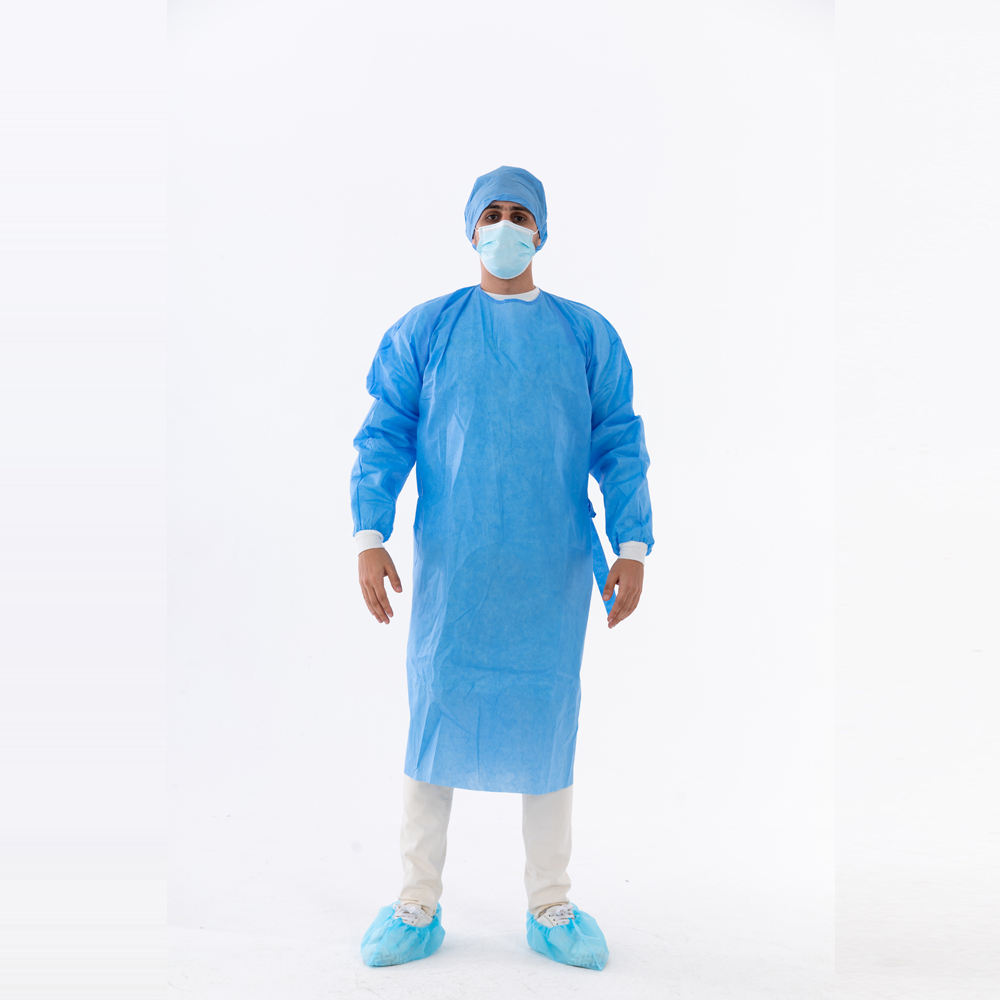The Importance of Choosing the Right Isolation Gown

Introduction
Isolation gowns are an important piece of protective clothing used in healthcare settings to prevent the spread of infectious diseases. They provide barrier protection to the skin, clothing, and environment from contamination by blood, bodily fluids, and other potentially infectious materials. In this blog, we will discuss the importance of isolation gowns, the different types available, and the key features to look for when choosing the right gown for your needs.
The Importance of Isolation Gowns in Healthcare Settings
Healthcare settings can be high-risk environments for the spread of infectious diseases. This is why the use of personal protective equipment (PPE) such as isolation gowns is essential to ensure the safety of patients, healthcare workers, and visitors. The primary role of an isolation gown is to prevent the spread of contamination from one person to another, or from one surface to another. By doing so, it helps to minimize the risk of exposure to potentially hazardous materials, reducing the chances of cross-contamination.
Types of Isolation Gowns
There are two main types of isolation gowns available: disposable and reusable.
- Disposable Isolation Gowns
These gowns are designed for single-use only and are typically made from a non-woven material such as polypropylene. They are lightweight, comfortable, and provide barrier protection against fluid exposure. They are often preferred for use in emergency and triage situations, as well as for high-risk patients, due to their convenience and ease of use.
- Reusable Isolation Gowns
These gowns are designed for multiple uses and are typically made from a durable material such as cotton or polyester. They are more cost-effective in the long term and are often preferred by healthcare workers who require a gown for extended use. However, it is important to note that they require proper cleaning and disinfecting after each use to maintain their protective barrier.
-
 Disposable PP+PE Isolation Gown – Yellow$3,560.00
Disposable PP+PE Isolation Gown – Yellow$3,560.00 -
 Sterile Disposable Surgical Gown with Reinforcement$5,156.41
Sterile Disposable Surgical Gown with Reinforcement$5,156.41 -
 Level 4 Sterile Surgical Gown with Reinforcement$5,810.00
Level 4 Sterile Surgical Gown with Reinforcement$5,810.00 -
 Disposable PP+PE Isolation Gown – Blue$11,675.38 – $18,483.99
Disposable PP+PE Isolation Gown – Blue$11,675.38 – $18,483.99 -
 Dark Blue Hospital Medical Scrub Suit Disposable$6,656.15 – $19,540.44
Dark Blue Hospital Medical Scrub Suit Disposable$6,656.15 – $19,540.44 -
 Disposable Isolation CPE Gown for Medical$2,377.31 – $10,069.62
Disposable Isolation CPE Gown for Medical$2,377.31 – $10,069.62 -
 Medical Disposable Isolation Gown Yellow$89.99 – $1,559.99
Medical Disposable Isolation Gown Yellow$89.99 – $1,559.99 -
 PP Isolation Gown Green$89.99 – $1,559.99
PP Isolation Gown Green$89.99 – $1,559.99 -
 Isolation Gowns Non-woven$89.99 – $1,659.99
Isolation Gowns Non-woven$89.99 – $1,659.99
Key Features to Look for When Choosing an Isolation Gown
When choosing an isolation gown, it is important to consider the following key features:
- Barrier Protection:
The gown should provide barrier protection against fluid exposure, including blood and bodily fluids, to ensure the safety of the wearer
- Comfort:
The gown should be comfortable to wear for extended periods, allowing healthcare workers to carry out their duties without being hindered by discomfort.

- Size:
The gown should fit comfortably and allow for ease of movement, while also providing full coverage of the body to ensure complete protection.
- Durability:
The gown should be made from a durable material that can withstand repeated use, washing, and disinfecting.
- Convenience:
Disposable gowns should be easy to use, dispose of, and transport, while reusable gowns should be easy to clean and disinfect.
- AAMI Level:
The Association for the Advancement of Medical Instrumentation (AAMI) has established four levels of barrier protection for isolation gowns. The higher the AAMI level, the greater the barrier protection provided by the gown.
Other Aspects:
Another important aspect to consider is the level of exposure that healthcare workers may face while wearing isolation gowns. The level of exposure will determine the level of barrier protection required and will help to ensure that the right gown is chosen for the specific task. For example, if a healthcare worker is dealing with a high-risk patient, a gown with a higher AAMI level may be necessary to ensure maximum protection.
It is also important to consider the cost of isolation gowns, as this can vary greatly depending on the type and quality of the gown. Disposable gowns are often the most cost-effective option, especially for short-term use, but reusable gowns can be a more cost-effective option in the long run.
Another consideration is the sustainability of isolation gowns. The disposable nature of many gowns can lead to a significant amount of waste, especially in high-volume healthcare settings. To minimize the environmental impact, reusable gowns or gowns made from sustainable materials can be a more environmentally friendly option.
Conclusion
In conclusion, isolation gowns play a crucial role in preventing the spread of infectious diseases in healthcare settings. They provide barrier protection to the skin, clothing, and environment from contamination by blood, bodily fluids, and other potentially infectious materials. When choosing an isolation gown, it is important to consider the type, barrier protection, comfort, size, durability, and convenience, as well as the AAMI level. By doing so, you can ensure that you have the right gown to meet your needs and provide the protection you require.






